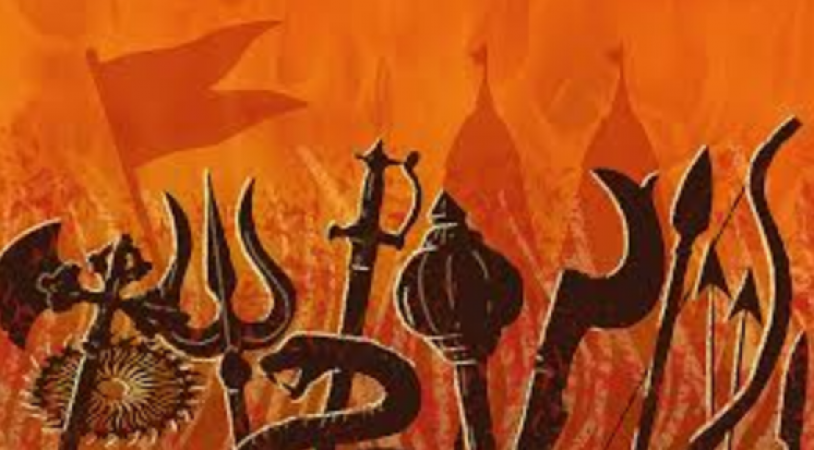
Hinduism, one of the oldest religions in the world, has a rich and complex history that spans thousands of years. Its establishment cannot be attributed to a single founder or a specific time period. Instead, it emerged as a synthesis of diverse beliefs, cultural practices, and philosophical ideas over several millennia. This article explores the evolution and establishment of Hinduism, shedding light on its origins, key concepts, and historical developments.
I. Ancient Origins:
The roots of Hinduism can be traced back to the ancient Indus Valley Civilization, which flourished around 2500 BCE in what is now modern-day Pakistan and northwest India. Archaeological discoveries from this civilization reveal religious symbols, seals, and figurines associated with fertility cults and reverence for Mother Goddesses.
II. Vedic Period:
The Vedic period, roughly from 1500 BCE to 500 BCE, witnessed the composition of the sacred texts known as the Vedas. These texts, transmitted orally for centuries before being written down, form the foundation of Hindu philosophy and ritual practices. The Rigveda, the oldest Veda, contains hymns addressed to various deities, emphasizing sacrificial rituals and the cosmic order (Rta).
III. Upanishads and the Emergence of Hindu Philosophy:
Around 800 BCE to 200 BCE, the Upanishads emerged as a significant body of philosophical and metaphysical texts. These texts explored profound questions about the nature of reality, the self (Atman), and the ultimate reality (Brahman). Concepts such as karma, samsara (cycle of birth and death), and moksha (liberation from the cycle) took shape during this period, laying the groundwork for Hindu philosophical systems.
IV. The Epics and Puranas:
The period between 400 BCE and 400 CE witnessed the composition of two great Hindu epics, the Mahabharata and the Ramayana. These epics contain mythological narratives, ethical teachings, and insights into the complexities of human existence. Additionally, the Puranas, a genre of texts that emerged during this period, provided elaborate cosmologies, genealogies of deities, and moral teachings.
V. The Development of Hindu Sects:
By the early centuries of the Common Era, Hinduism had diversified into various sects and schools of thought. The emergence of Bhakti (devotional) movements, such as those led by Alvars and Nayanars, emphasized personal devotion to specific deities, fostering a more accessible form of religious practice. The growth of Shaivism, Vaishnavism, and Shaktism as major sects added further dimensions to Hindu belief and worship.
VI. Influence of Foreign Invasions:
Over the centuries, India witnessed invasions and the influence of foreign rulers such as the Greeks, Persians, and Muslims. These encounters brought new ideas, cultural exchanges, and religious syncretism, leading to the evolution of Hinduism as a dynamic and adaptive religion. Notably, the Bhakti movement gained prominence during the medieval period, emphasizing individual devotion and breaking down social barriers.
VII. The Colonial Era and Hindu Renaissance:
The arrival of European colonial powers, particularly the British, in the 18th and 19th centuries significantly impacted Hinduism. The colonial era witnessed the codification of Hindu law, the translation of ancient texts, and the spread of Western education. The influence of the British-led to a Hindu renaissance, with reform movements such as the Brahmo Samaj and Arya Samaj advocating for social reforms, religious tolerance, and the revival of Hindu values.
VIII. Hinduism in the Modern Era:
Following India's independence in 1947, Hinduism emerged as the majority religion of the newly formed nation. The Indian Constitution provided for religious freedom and recognized Hindu customs and practices. Hinduism continues to evolve, adapting to contemporary challenges and engaging in dialogues with other religious traditions. It remains a vibrant and diverse faith with millions of adherents worldwide.
Hinduism's establishment is a complex tapestry woven through the ages, shaped by a myriad of influences, cultural exchanges, and philosophical reflections. From its ancient origins in the Indus Valley Civilization to the vibrant religious landscape of modern India, Hinduism has evolved into a diverse and inclusive faith, encompassing a wide range of beliefs, practices, and philosophies. Understanding the historical trajectory of Hinduism provides insights into the remarkable journey of one of the world's oldest religions.
Gomateshwara Temple: Monolithic Statues
The Significance of Bells in Temples: Unveiling Their Musical Charm